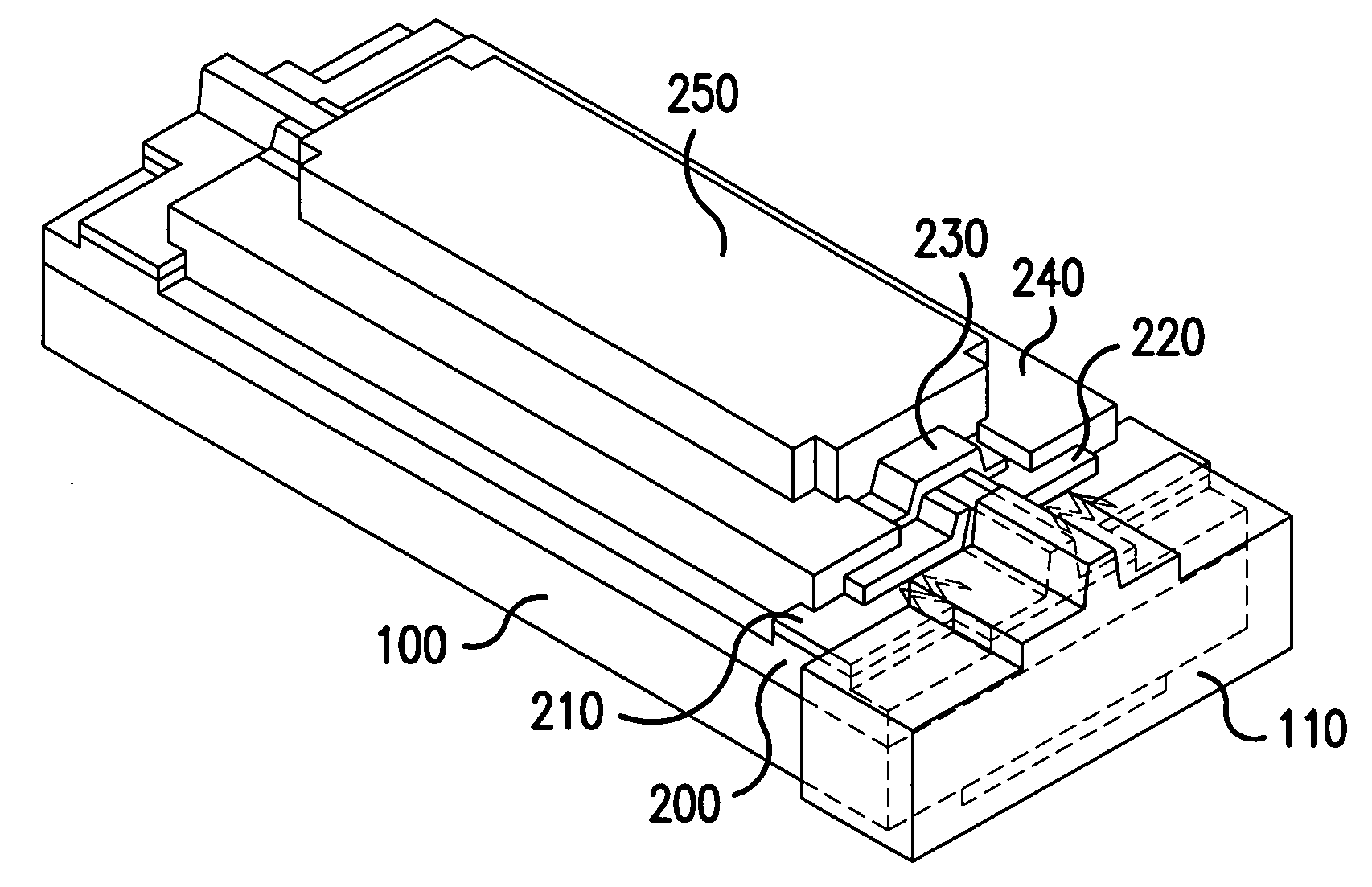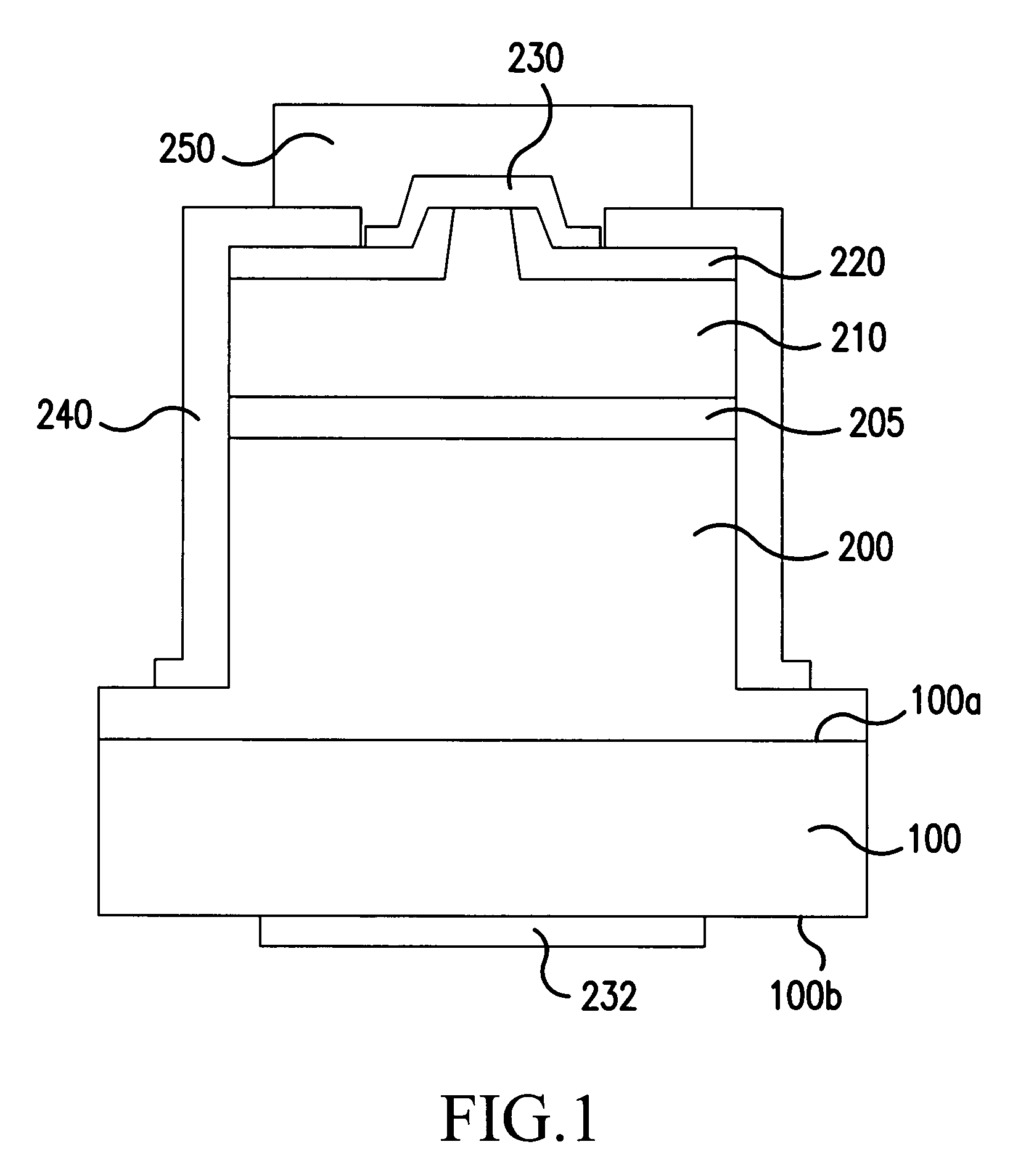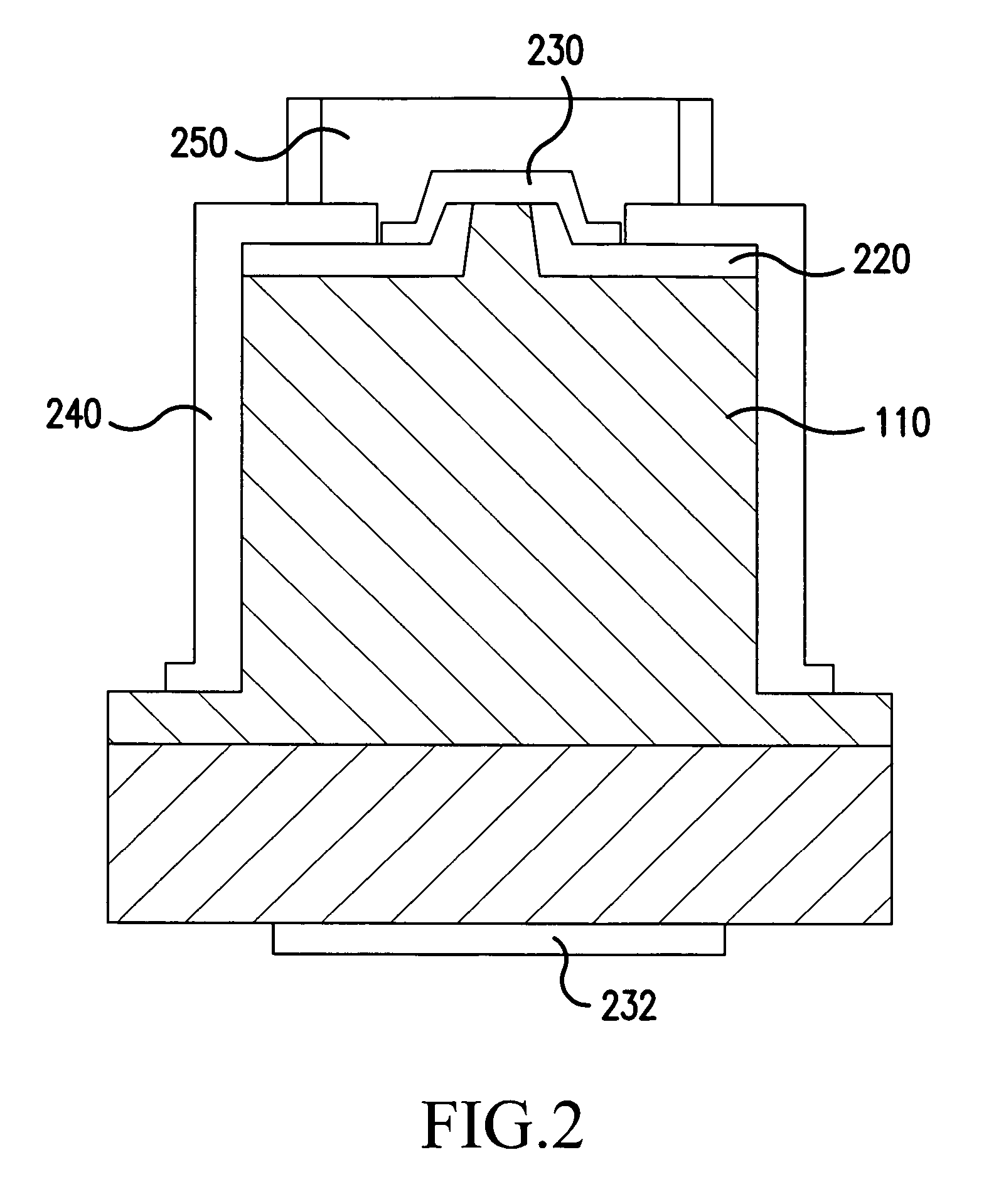Semiconductor laser device
a laser device and semiconductor technology, applied in semiconductor lasers, instruments, record information storage, etc., can solve the problems of shortening the lifetime of the device, degrading the end surface, and affecting the performance of the device, so as to increase the light absorption and accelerate the process. , the effect of high power
- Summary
- Abstract
- Description
- Claims
- Application Information
AI Technical Summary
Benefits of technology
Problems solved by technology
Method used
Image
Examples
example 1
[0092] For the substrate, a wafer-shaped GaN substrate 100 whose main surface is C-plane is used. The substrate is not specifically limited to the above and a GaN substrate whose main surface is R-plane or A-plane can be used according to need.
(n-Type Cladding Layer 201)
[0093] Next, the GaN substrate is fed into a MOCVD apparatus. At the atmospheric temperature in the furnace of 1050° C., using TMA (trimethylaluminum), TMG (trimethylgallium) and ammonia as the raw material gases, an n-type cladding layer of undoped Al0.04Ga0.96N is grown to the thickness of 2.0 μm on the GaN substrate.
(n-Type Optical Guide Layer 202)
[0094] Next, at approximately the same temperature as in growing the n-type cladding layer and using TMG and ammonia as the raw material gases, an n-type optical guide layer of undoped GaN is grown to a thickness of 0.19 μm. This layer may be doped with an n-type dopant.
(Active Layer 205)
[0095] Next, at the temperature of 800° C. and using TMI, TMG and ammonia a...
example 2
[0110] A nitride semiconductor laser device is fabricated in a similar manner as in Example 1, except that the dielectric film 110 of the end surface of the light emitting side is constructed as below. A ECR sputtering apparatus is used. After cleaning the end surface of the light emitting side by using plasma of an active gas such as oxygen, a first dielectric layer and a second dielectric layer made of AlxOy are formed. First, the first dielectric layer is disposed to a thickness of 20 nm by using the metal target of 5N Al, under the conditions of the Ar flow rate 15 sccm, the O2 flow rate of 10 sccm, the microwave power of 600W, and the RF of 600 W. Then, using the metal target of 5N Al, the second dielectric layer is disposed to a thickness of 100 nm, under the conditions of the Ar flow rate 10 sccm, the O2 flow rate of 3 sccm, the microwave power of 450 W, and the RF of 450 W. In this case, the refractive index of the first dielectric layer to the light with a wavelength of 405...
example 3
[0111] A nitride semiconductor laser device is fabricated in a similar manner as in Example 1, except that the dielectric film is constructed as below.
[0112] The end surface of the light emitting side is cleaned by using ECR sputtering apparatus with plasma of an active gas such as oxygen, using 5N Al as the metal target and under the conditions of Ar flow rate 15 sccm, the O2 flow rate 10 sccm, the microwave power 600 W, and the RF 600 W, a first dielectric layer 111 is disposed to a thickness of 20 nm and then, using 5N Al as the metal target and under the conditions of Ar flow rate 10 sccm, the O2 flow rate 3 sccm, the microwave power 450 W, and the RF 450 W, a second dielectric layer is disposed to a thickness of 40 nm to form a dielectric film 110. In this case, the refractive index of the first dielectric layer to the light with a wavelength of 405 nm is 1.63 and the refractive index of the second dielectric layer is 1.67.
[0113] Thereafter, a Al2O3 layer is disposed to a thi...
PUM
| Property | Measurement | Unit |
|---|---|---|
| reflectance | aaaaa | aaaaa |
| oscillation wavelength | aaaaa | aaaaa |
| reflectance | aaaaa | aaaaa |
Abstract
Description
Claims
Application Information
 Login to View More
Login to View More - R&D
- Intellectual Property
- Life Sciences
- Materials
- Tech Scout
- Unparalleled Data Quality
- Higher Quality Content
- 60% Fewer Hallucinations
Browse by: Latest US Patents, China's latest patents, Technical Efficacy Thesaurus, Application Domain, Technology Topic, Popular Technical Reports.
© 2025 PatSnap. All rights reserved.Legal|Privacy policy|Modern Slavery Act Transparency Statement|Sitemap|About US| Contact US: help@patsnap.com



